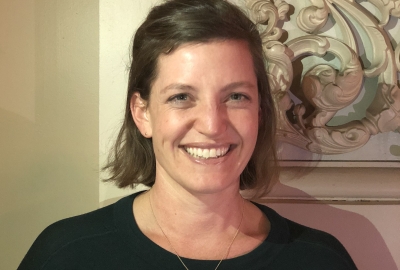
Lianna Wright is the Executive Director of Enrollment Research and Policy within the Office of Student Enrollment at the NYC DOE. Her team uses research and analysis to support all DOE admissions processes (including 3-K, pre-K, kindergarten, Gifted & Talented, middle school, and high school) and collaborates across the NYCDOE on enrollment-related research projects. This includes the DOE's recent focus on school diversity, which is of particular interest to Lianna and her team. Lianna holds a Bachelor’s degree from the Colorado College, and decided to come to NYU after working in San Francisco for a few years -- first teaching pre-school, and then managing a school volunteer program. She has been working at the DOE since graduating from NYU in 2012.
What did you do before starting the EDSP program?
Before EDSP I worked at an education non-profit in San Francisco. I managed the organization's School Volunteer program, which recruited, trained, and placed thousands of volunteers in schools each year. Before that, I taught pre-school, and worked at an elementary school after school program.
What do you like best about your current organization?
My favorite thing about working at the DOE is getting the opportunity to meet students and families, and hear about their experiences as they navigate our system. Though I work on a quantitative team that spends most of its time working on the backend of the enrollment process, I still regularly get to visit schools, give family-facing presentations on how admissions works, and listen to students talk about the types of diversity they'd like to see in their schools. This enables us to better understand different perspectives, and take that into consideration in all of our work.
What is one thing you wish you knew when you started the program?
I wish I knew that, in actuality, most statistical analysis used in practical settings is less complex that what you learn in the program. In my current job, I spend far more time cleaning data than running regressions or T-tests. We need to be able to explain the research and analysis we're doing to non-savvy audiences, and so we try to pull out the most salient points and share them in a clear and understandable way.
